No Longer Homeless
No Longer Homeless
How the Ex-Homeless Get and
Stay Off the Streets
David Wagner
With Gemma Atticks
ROWMAN & LITTLEFIELD
Lanham Boulder New York London
Published by Rowman & Littlefield
An imprint of
The Rowman & Littlefield Publishing Group, Inc.
4501 Forbes Boulevard, Suite 200, Lanham, Maryland 20706
https://rowman.com
Unit A, Whitacre Mews, 26-34 Stannary Street, London SE11 4AB,
United Kingdom
Copyright 2018 by The Rowman & Littlefield Publishing Group, Inc.
All rights reserved. No part of this book may be reproduced in any form or by any electronic or mechanical means, including information storage and retrieval systems, without written permission from the publisher, except by a reviewer who may quote passages in a review.
British Library Cataloguing in Publication Information Available
Library of Congress Cataloging-in-Publication Data
Names: Wagner, David, author. | Atticks, Gemma, 1981 author.
Title: No longer homeless : how the ex-homeless get and stay off the streets / David Wagner with Gemma Atticks.
Description: Lanham : Rowman & Littlefield, [2018] | Includes bibliographical references and index. |
Identifiers: LCCN 2017050528 (print) | LCCN 2017052783 (ebook) | ISBN 9781538110089 (electronic) | ISBN 9781538110072 (cloth : alk. paper)
Subjects: LCSH: Homeless personsUnited States. | Homeless personsEmploymentUnited States. | United StatesSocial policy.
Classification: LCC HV4505 (ebook) | LCC HV4505 .W234 2018 (print) | DDC 362.5/920973dc23
LC record available at https://lccn.loc.gov/2017050528
 TM The paper used in this publication meets the minimum requirements of American National Standard for Information Sciences Permanence of Paper for Printed Library Materials, ANSI/NISO Z39.48-1992.
TM The paper used in this publication meets the minimum requirements of American National Standard for Information Sciences Permanence of Paper for Printed Library Materials, ANSI/NISO Z39.48-1992.
Printed in the United States of America
Acknowledgments
As with other books that place us in a different world, in this case the world of the streets and those who lived there and later exited them, I was dependent on assistance in navigating my way around the areas studied. Several people and groups were most helpful: the Los Angeles Community Action Network in Skid Row LA; the Los Angeles Poverty Department (LAPD), a theater group and educational group; the Amistad Center in Portland, Maine, a multiservice program for people with mental disabilities; and the National Coalition for the Homeless (NCH) in Washington, DC. I particularly want to honor Michael Stoops of the NCH, whose untimely death occurred a short time after he had organized my interviews with the Speakers Bureau members. I also wish to thank the Emmaus Center in Haverhill, Massachusetts; the Crossroads Shelter in Portsmouth, New Hampshire; and the Homeless Voices for Justice at Preble Street Resource Center in Portland, Maine.
This book provided me with a good opportunity to work with Ms. Gemma Atticks, a superb student from the University of Southern Maine, who was not only gifted, but eager and hungry for knowledge and experience. As usual, I am indebted to Marcia B. Cohen, my wife, and expert on homelessness, who recently retired from the University of New England. She remains my first reader and audience.
Chapter 1
Giving Voice to the Ex-Homeless
Early in the 1980s homelessness was rediscovered in America. For a short period of that decade, the specter of Americans living on the streets, in cars and other vehicles, in abandoned housing, and elsewhere shocked Americans and caused controversy between activists and advocates on the one side, and the conservative Reagan administration on the other. Unfortunately, several decades later, while the problem has if anything grown worse and larger, the presence of homeless people is no longer shocking or upsetting to most Americans.
Although there are many reasons for the decline in attention to homelessness, one nagging issue is whether the problem was ever described adequately or defined in a way that could sustain interest. For both advocates and critics, the visible denizens of the streets and shelters became a focus, but over time as many people left the streets and became housed, while, of course, others died or ended up in institutions, the long-term fate of all those who were and would be homeless, at the lowest rung of poverty, was not explored.
The firm misconception was planted that the homeless people you happen to see on the street today were probably there last year, and would likely be there next year. In reality, although there are some people who are homeless for many years, they make up only a small part of the population, and even those people labeled as chronic homeless often do get housing. Each year millions of people move from sleeping in cars or on the streets or doubled-up with relatives or friends to securing their own apartments or other housing. Social service agencies place many thousands of people in housing each day. Lost in the heated debates about the politics of homelessness is that for most people surviving on the streets is a temporary, albeit awful, phenomenon.
Some experts have tried to estimate the number of Americans who have experienced homelessness by surveys among the general population. They have reached estimates that, depending on exact definitions of homelessness, range in the area of between 6 percent and 14 percent of the whole US population, usually over a particular period such as five years. This is an immense part of the population, ranging from nearly fourteen to as many as nearly thirty-two million people, using US Census figures and excluding children under fifteen. The issue of homelessness is one that is extremely broad, but it is not represented well by the drunks or bag ladies that many people associate with homelessness.
The time has come for a book on ex- or formerly homeless people. Of course, in the 1980s the dramatic issue seemed the idea of people living on the streets. But we now also know that despite all the awful conditions apparent on the streets (and in many shelters too) most homeless people return to housing and rejoin the domiciled poverty population. This book draws on those who have made it out of homelessness both to explore how they did so, but as importantly how they are living now, and what allows them to survive, if uneasily, in housing.
Looking at people who have been homeless not only provides us with valuable information about surviving the streets, but shows us the resilience and strength many poor people have. I suggest that it adds to our perception of the humanity of poor people by exploring their lives over time, in some cases, through many years of housing. Second, unlike the interviews of people while they are at a shelter or on the streets and at their most vulnerable, it also allows for reflection by people who have weathered and overcome difficult circumstances.
The book begins by reviewing some key issues about homelessness and sharing information about how we study the formerly homeless. My research methods are discussed more fully in appendix I. Chapter 2 shares interviews with formerly homeless people and illustrates how many of them surpass common expectations about the trajectory of a homeless persons life. In chapters 36, I address some of what the interviews make evident is needed for homeless people to remain off the streets: housing, income, and supportive communities. In appendix II, I discuss many important people in American history who were formerly homeless, and a number of celebrities who say they were homeless.
Next page
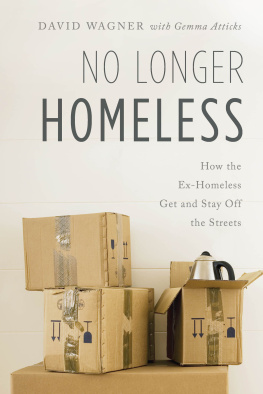
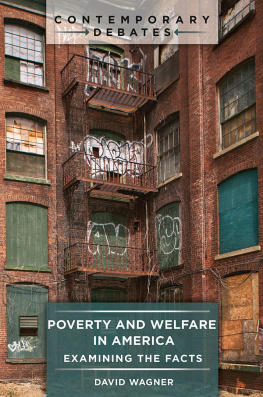

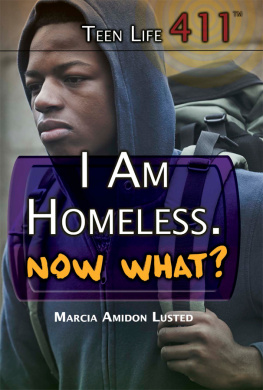


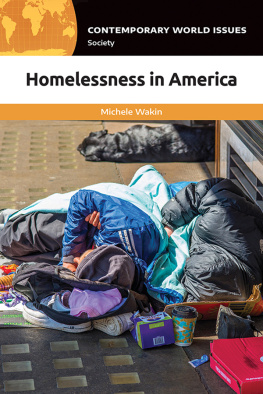

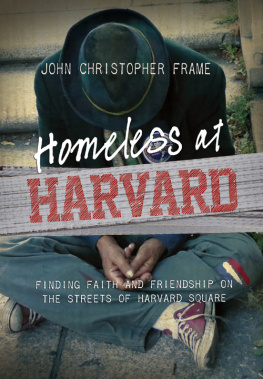
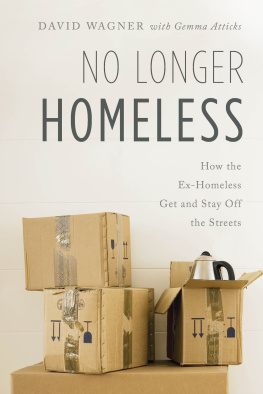
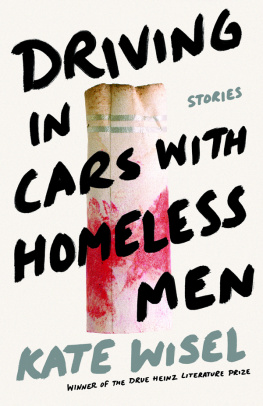
 TM The paper used in this publication meets the minimum requirements of American National Standard for Information Sciences Permanence of Paper for Printed Library Materials, ANSI/NISO Z39.48-1992.
TM The paper used in this publication meets the minimum requirements of American National Standard for Information Sciences Permanence of Paper for Printed Library Materials, ANSI/NISO Z39.48-1992.